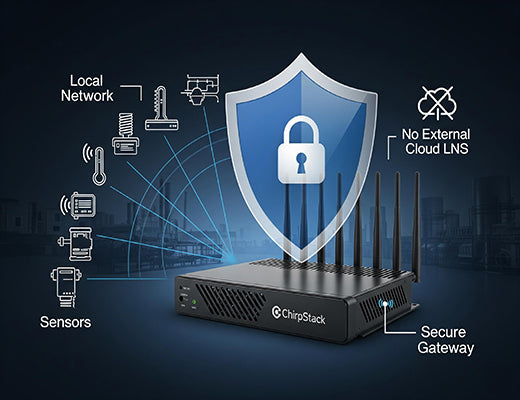
What is a ChirpStack LoRaWAN Gateway? An All-in-One Solution Guide
|
|
Time to read 4 min
|
|
Time to read 4 min
If you're exploring options for building a private LoRaWAN network, you've likely come across the term ChirpStack LoRaWAN Gateway . But what exactly is it, and why is it becoming the go-to choice for industrial and enterprise IoT?
In short, it’s an all-in-one device that runs the entire LoRaWAN Network Server (LNS) locally, offering unparalleled security, reliability, and control.
This guide will explain the core concepts of a ChirpStack LoRaWAN Gateway , how it differs from traditional setups, and why a powerful LoRaWAN edge gateway is the perfect hardware to run it on.
I've talked to many system integrators who feel trapped by public or third-party LoRaWAN networks. They face recurring data fees, unpredictable latency, and major concerns about data security. What if their factory's critical sensor data goes down because a cloud service thousands of miles away has an outage? It's a risk many are no longer willing to take.
This is the exact problem a ChirpStack LoRaWAN Gateway is designed to solve. It’s a fundamental shift in network architecture. Instead of just being a simple data forwarder, the gateway itself becomes the intelligent brain of your entire LoRaWAN network. It’s about moving from renting a network to owning it, giving you complete control over your data and your operational destiny.

First, let's be clear: ChirpStack is the leading open-source LoRaWAN Network Server. It’s a powerful suite of software that handles all the complex tasks of managing a LoRaWAN network:
Traditionally, you would install ChirpStack on a server in a data center. A ChirpStack LoRaWAN Gateway , however, is a device powerful enough to run the entire ChirpStack stack directly on the gateway itself.
Running the LNS on the gateway is a true edge computing approach. As we detailed in our guide to LoRaWAN Gateway Modes , this "built-in LNS" model offers game-changing advantages over the traditional "packet forwarder" model.
You can't run a full network server on just any hardware. You need a true LoRaWAN edge gateway with enough processing power and a flexible OS.
A device like the Robustel R1520LG is purpose-built for this role. It combines a high-performance LoRaWAN radio with a powerful processor and, crucially, runs an open, Debian-based OS (RobustOS Pro) that fully supports running ChirpStack in a Docker container. This gives you an industrial-grade, all-in-one solution that is both powerful and easy to manage.

A ChirpStack LoRaWAN Gateway represents the modern, intelligent approach to deploying private IoT networks. It moves the core network intelligence from a distant cloud to the local edge, providing a solution that is inherently more secure, reliable, and responsive. For any organization that values data ownership, operational uptime, and low latency, choosing an all-in-one gateway that can run its own built-in LNS is the most strategic and cost-effective path forward.

A1: While more involved than a simple packet forwarder, gateways that support Docker make it much easier. You can often deploy the entire ChirpStack stack with a single command or a simple script, without needing to manually compile and configure all the components.
A2: Yes. LoRaWAN's long-range capabilities mean a single gateway can cover a large factory, a multi-story building, or a small farm. For very large areas, you can deploy multiple gateways that all run in packet forwarder mode and point to one central gateway that acts as the main ChirpStack LNS.
A3: ChirpStack has excellent built-in integrations. The most common method is to have it publish decrypted device data to an MQTT topic. Your cloud or on-premise application can then simply subscribe to that topic to receive a real-time stream of clean data.